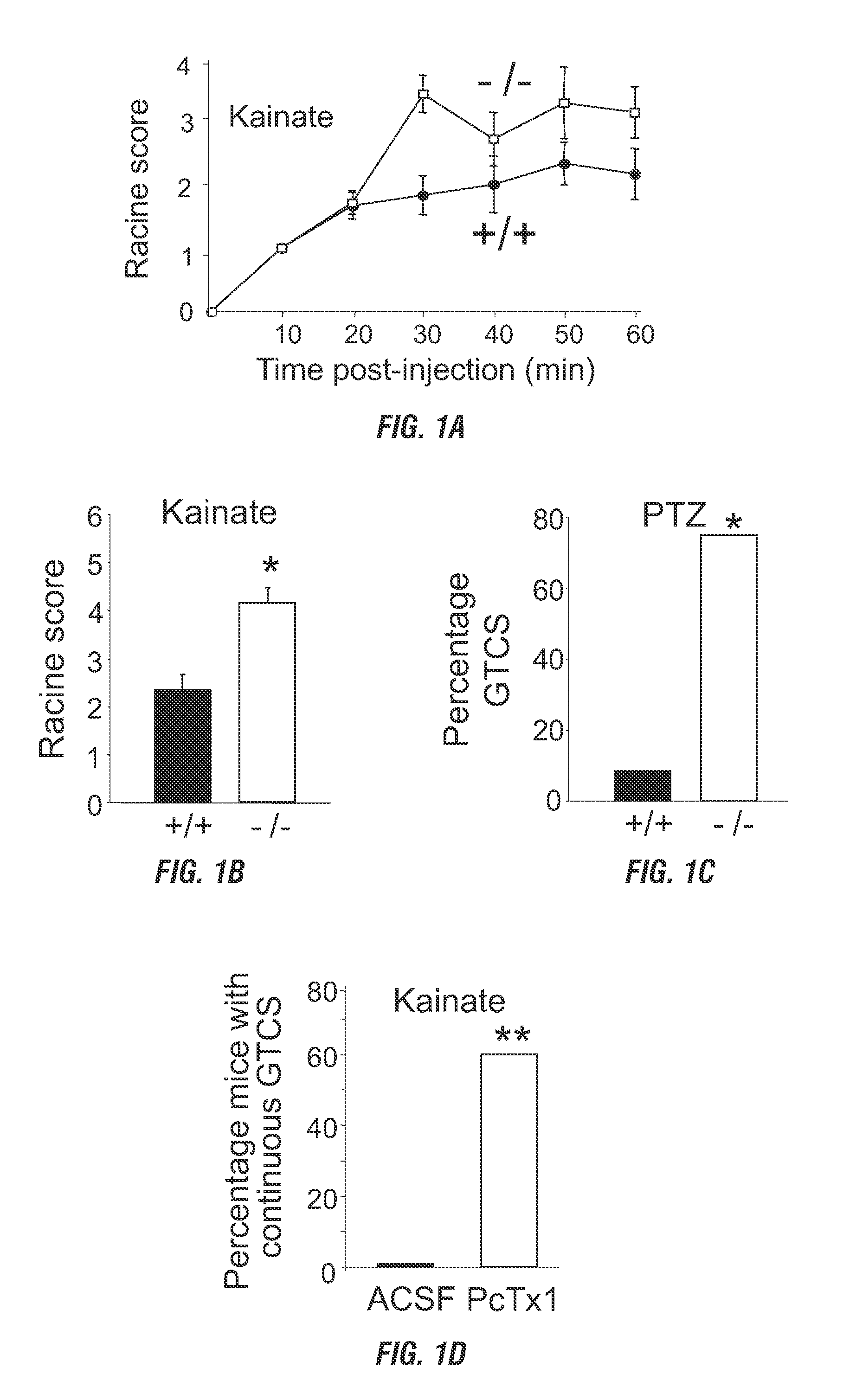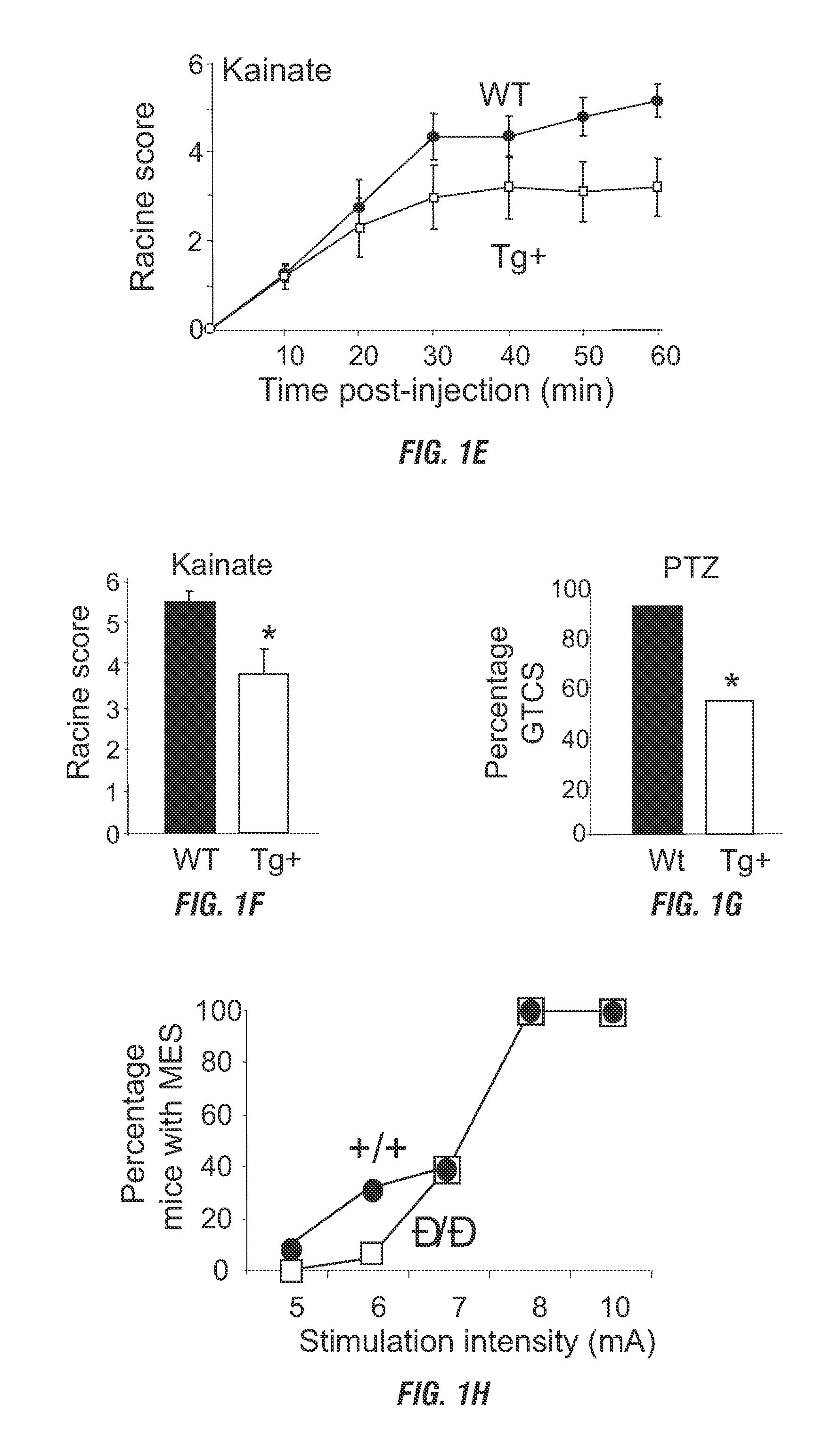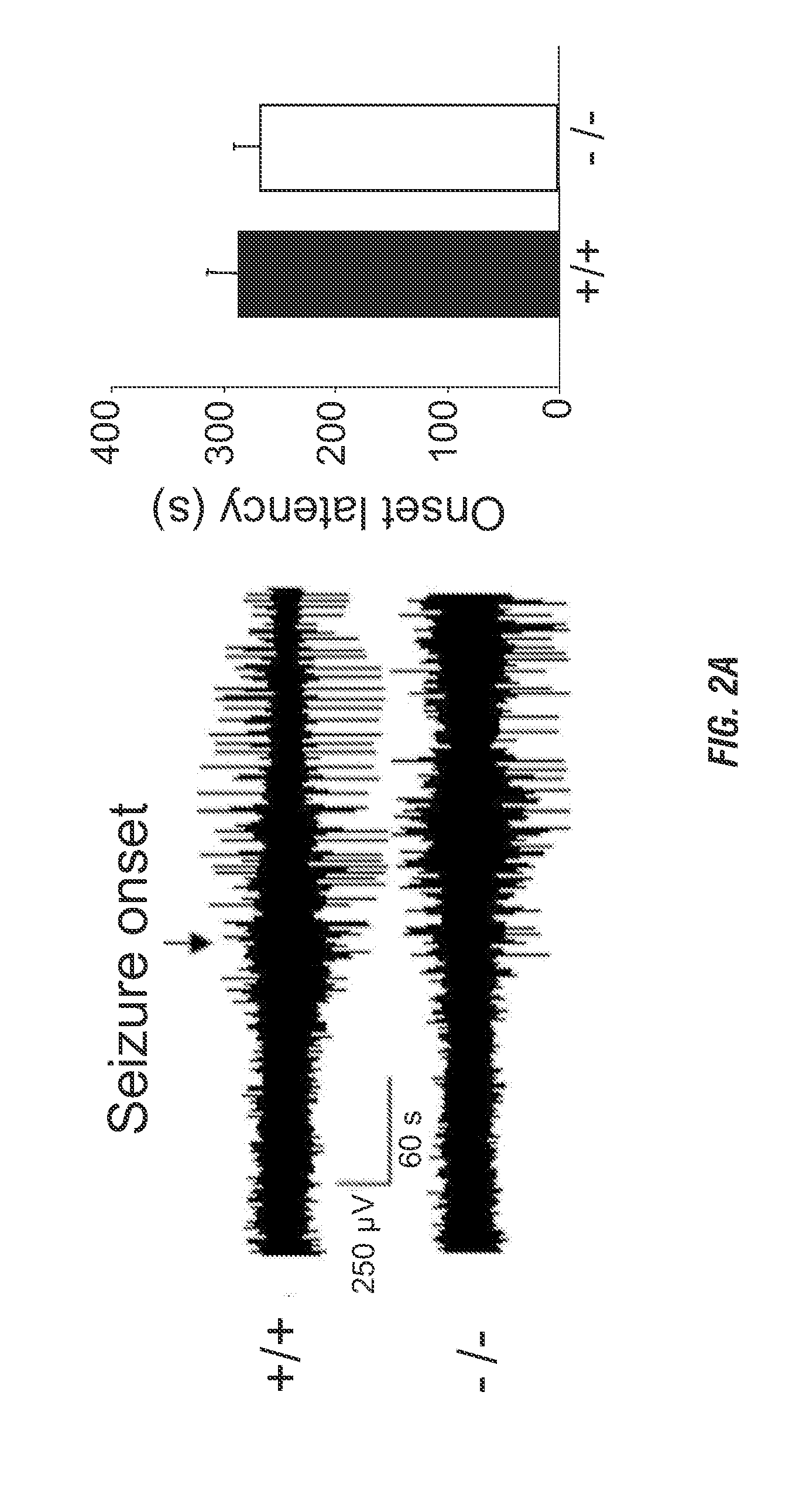Method and compositions for treating and preventing seizures by modulating acid-sensing ion channel activity
- Summary
- Abstract
- Description
- Claims
- Application Information
AI Technical Summary
Benefits of technology
Problems solved by technology
Method used
Image
Examples
example 1
[0099]The convulsants kainate or PTZ solutions were injected via IP following suspension in phosphate buffered saline (Gibco, Carlsbad Calif.) and titration to pH 7.4 with 0.1 M NaOH. Mice were injected with 20 mg / kg kainate and scored for 1 hour by a trained observer blinded to genotype. The highest score per ten-minute interval and the maximum score during the entire trial were assessed. Additionally studies scored the incidence of GTCS which were identified by 4-limb explosive clonus followed by tonic hind limb extension.
[0100]Dose, genotype, and age were as follows: (1) PTZ 50 mg / kg, ASIC1a+ / + (n=12) vs. ASIC1a− / − (n=8), ages 18-22 weeks; (2) PTZ 65 mg / kg, Tg+(n=13) vs. WT litter-mates (n=13), ages 25-41 weeks; (3) Kainate 30 mg / kg, Tg+(n=10) vs. WT litter-mates (n=13), ages 31-36 weeks. Different kainate and PTZ doses were used to decrease the overall number of animals required and avoid ceiling and floor effects.
[0101]EEG was recorded at baseline and in response to a single IP...
example 2
[0102]Horizontal hippocampal slices (400 μm) were prepared from 14 to 24-day-old ASIC1a+ / + and ASIC1a− / − mice similar to methods described previously. Prior to the sectioning, mice were transcardially perfused with a high Mg2+ / low Ca2+ solution chilled to 4° C. (in mM): 4.9 MgSO4, 0.5 CaCl2, 126 NaCl, 5 KCl, 1.25 NaH2PO4, 27.7 NaHCO3, 10 Dextrose, 1.1 MgCl2, pH 7.35 bubbled with 95% O2 / 5% CO2. After sectioning, slices were incubated in artificial cerebral spinal fluid (ACSF) for at least 1 hour prior to testing: 126 NaCl, 5 KCl, 1.8 MgSO4, 1.25 NaH2PO4, 27.7 NaHCO3, 10 Dextrose, and 1.6 CaCl2.
[0103]Standard extracellular field potential recording techniques were performed in a submerged chamber perfused with ACSF (flow-rate 4 ml / min, 33° C.±0.5° C.). Field-potentials were recorded in the proximal CA3 hippocampal field with ACSF-filled glass pipettes (2+ ACSF until the first epileptiform spike. After scoring the latency to epileptiform activity and recording 5 minutes of seizure acti...
example 3
[0107]The activation of inhibitory interneurons, cell populations with a critical role in limiting epileptiform activity, was tested as a mechanism by which acidosis-induced ASIC currents could inhibit epileptiform discharges. The effects of physiologically relevant reductions in pH on acutely dissociated hippocampal interneurons, as well as excitatory pyramidal neurons. Neurons were identified based on their location (lacunosum moleculare vs. CA1), size, morphology, and firing pattern, resulting in reduced extracellular pH activating inward current in wild-type, but not ASIC1a− / − interneurons (FIG. 5a), consistent with prior studies showing ASIC1a disruption eliminates currents evoked by pH reductions to as low as 5.0.
[0108]Reducing the pH from 7.4 to 7.2, 7.0 and 6.8 also evoked ASIC currents (FIG. 5b). The pH values are those ranges reported in seizures and in the same range measured by Applicants. The interneurons also had larger H+-gated current densities than pyramidal neurons...
PUM
 Login to View More
Login to View More Abstract
Description
Claims
Application Information
 Login to View More
Login to View More - R&D
- Intellectual Property
- Life Sciences
- Materials
- Tech Scout
- Unparalleled Data Quality
- Higher Quality Content
- 60% Fewer Hallucinations
Browse by: Latest US Patents, China's latest patents, Technical Efficacy Thesaurus, Application Domain, Technology Topic, Popular Technical Reports.
© 2025 PatSnap. All rights reserved.Legal|Privacy policy|Modern Slavery Act Transparency Statement|Sitemap|About US| Contact US: help@patsnap.com



